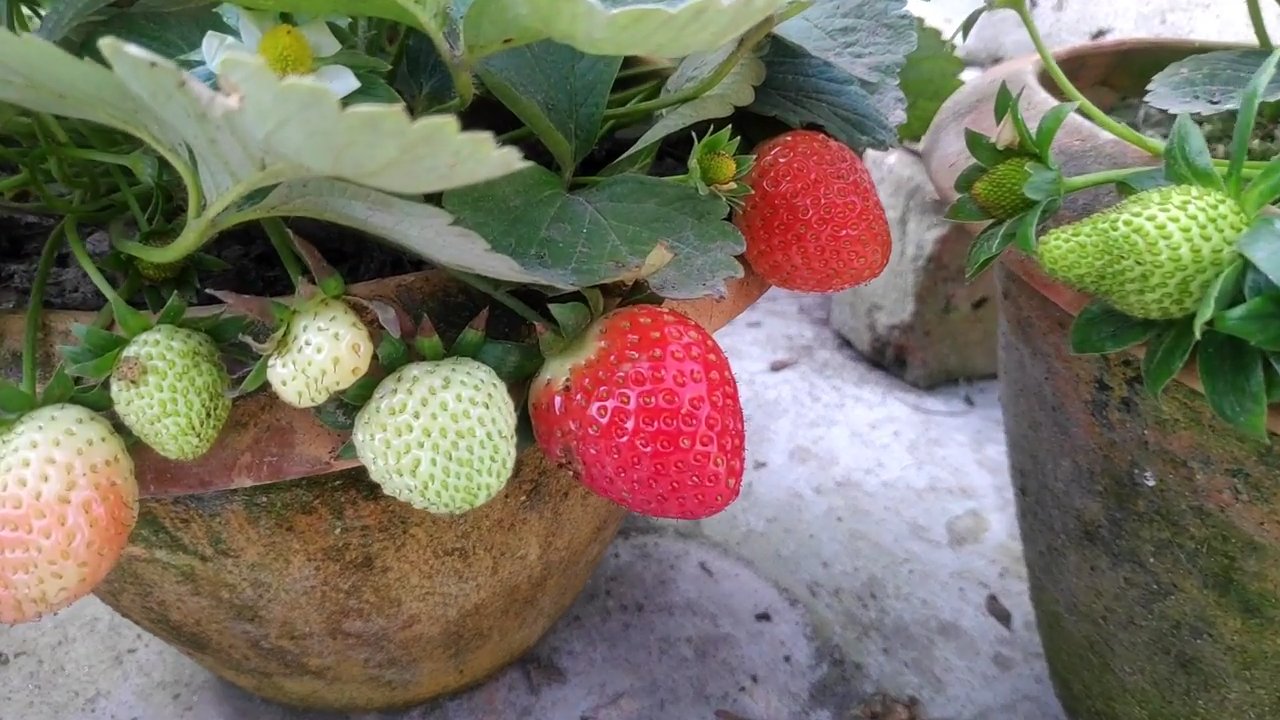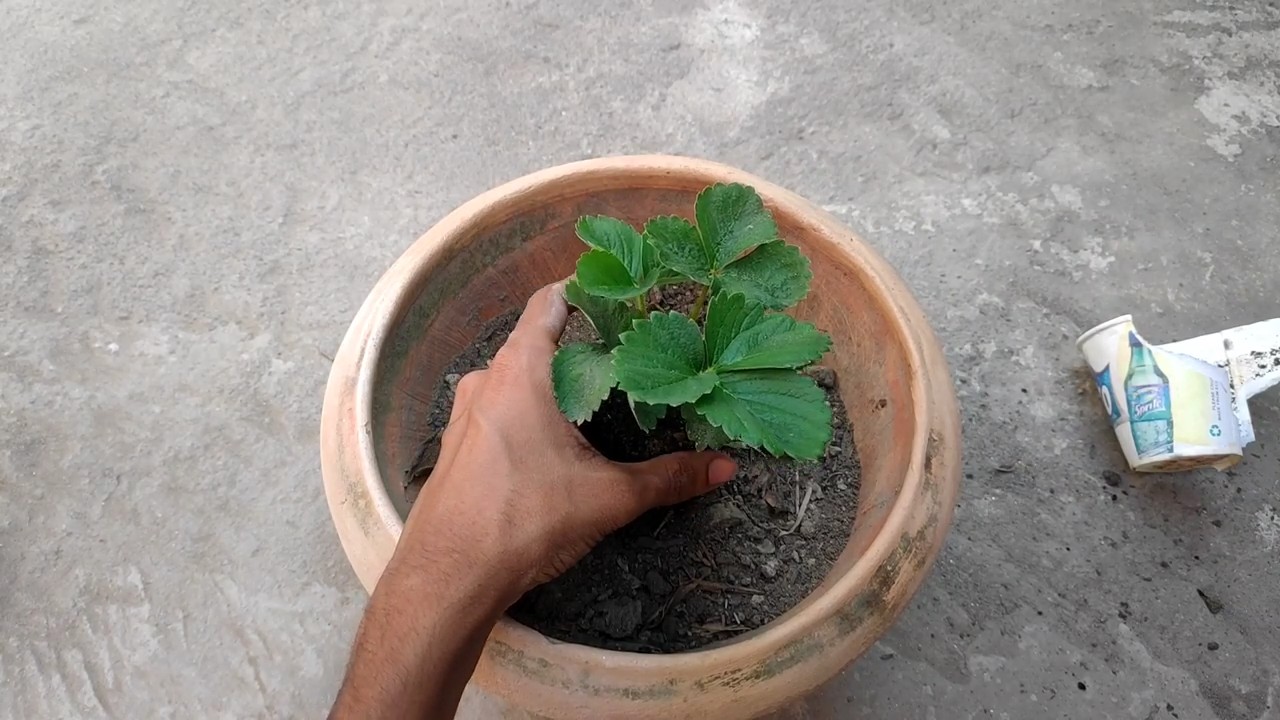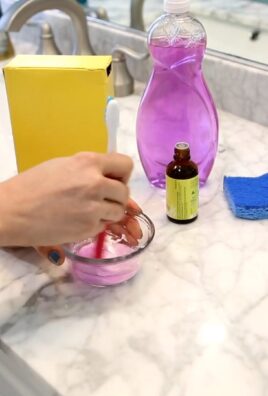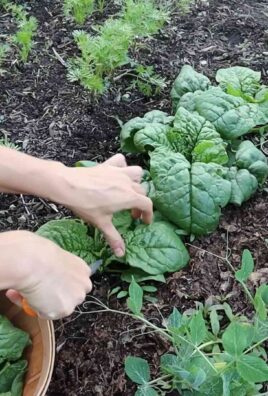Grow Strawberries Indoors? Absolutely! Imagine plucking juicy, sun-ripened strawberries right from your own home, even when it’s snowing outside. Sounds like a dream, right? Well, it’s a dream that can easily become a reality with a few simple tricks and a little DIY magic. For centuries, humans have cultivated plants indoors, from ancient Roman greenhouses to Victorian-era conservatories, showcasing our innate desire to connect with nature, regardless of the season.
But let’s be honest, who has the space for a sprawling greenhouse these days? That’s where these clever DIY hacks come in! In this article, I’m going to share my favorite, tried-and-true methods for successfully grow strawberries indoors. Whether you’re a seasoned gardener or a complete newbie, you’ll find easy-to-follow instructions and helpful tips to transform your windowsill into a thriving strawberry patch.
Why bother with indoor strawberries? Because fresh, homegrown berries are simply the best! Plus, you’ll avoid the pesticides and long-distance transportation often associated with store-bought fruit. Get ready to enjoy the sweet taste of summer all year round – let’s get growing!

Growing Strawberries Indoors: Your DIY Guide for a Sweet Harvest
Hey strawberry lovers! Have you ever dreamed of enjoying fresh, juicy strawberries all year round, no matter what the weather is like outside? Then you’ve come to the right place! I’ll show you how to grow your own strawberries indoors with a few simple tricks and a little patience. It’s easier than you think and incredibly fun!
What You Need: The Shopping List for Your Indoor Strawberry Farm
Before we get started, let’s make sure we have everything we need. Here is a list of the most important items:
- Strawberry plants: Everbearing varieties like ‘Seascape’, ‘Albion’, or ‘Eversweet’ are best suited. These varieties produce fruit over a longer period. You can buy them at a nursery or online. Make sure the plants look healthy and strong.
- Planters: Choose pots with a diameter of at least 15 cm (6 inches). They should have drainage holes so excess water can run off. You can also use hanging pots to save space.
- Potting soil: Use a high-quality potting soil that drains well. You can also buy a special strawberry mix. Avoid garden soil, as it is often too heavy and does not drain well.
- Grow lights: Strawberries need a lot of light to bear fruit. If you don’t have enough sunlight, you’ll need grow lights. LED lamps are energy-efficient and don’t give off much heat.
- Fertilizer: Use a liquid fertilizer for strawberries. Make sure it is rich in potassium, as potassium is important for fruit formation.
- Spray bottle: For moistening the leaves.
- Small scissors or garden shears: For removing dead leaves and runners.
- Optional: Mulch (e.g., straw or coconut fibers) to retain moisture in the soil and suppress weeds.
Step-by-Step Guide: How to Plant Your Strawberries Correctly
Now that we have everything, we can start planting. Follow these steps to ensure your strawberries get off to a good start:
- Prepare the pots: Fill the pots with potting soil, but leave about 2-3 cm (1 inch) of space at the top. Press the soil down lightly.
- Plant the strawberries: Carefully remove the strawberry plants from their pots. Loosen the roots slightly before placing them in the new pots. Make sure that the crown (the point where the leaves emerge from the roots) is just above the soil.
- Water in: Water the strawberry plants thoroughly until water runs out of the drainage holes.
- Placement: Place the pots in a sunny location. If you are using grow lights, place them about 15-30 cm (6-12 inches) above the plants.
The Right Care: How to Get Your Strawberries to Bloom and Fruit
The right care is crucial for a bountiful harvest. Here are some tips you should follow:
- Watering: Water the strawberries regularly, but avoid waterlogging. The soil should always be slightly moist. Check the moisture by sticking your finger about 2 cm (1 inch) into the soil. If the soil feels dry, it’s time to water.
- Fertilizing: Fertilize the strawberries every two weeks with a liquid fertilizer. Follow the instructions on the packaging.
- Pollination: Strawberries are self-pollinating, but you can assist pollination by gently shaking the flowers or using a small brush to transfer pollen from flower to flower. A small fan can also help distribute the pollen.
- Light: Strawberries need at least 6-8 hours of light per day. If you don’t have enough sunlight, use grow lights.
- Temperature: The ideal temperature for strawberries is between 18 and 24 degrees Celsius (65-75°F).
- Pruning: Regularly remove dead leaves and runners. This helps to improve air circulation and prevent diseases.
- Pest protection: Check the plants regularly for pests like aphids or spider mites. If you find pests, you can combat them with a neem oil-based insecticide or a mixture of water and dish soap.
The Harvest: The Sweet Reward for Your Work
After about 4-6 weeks, your strawberries should be ripe. They are ripe when they have a deep red color and can be easily detached from the stem. Pick the strawberries carefully to avoid damaging the plants.
Common Problems and Solutions: What to Do When Something Goes Wrong?
Problems can also occur with indoor strawberry cultivation. Here are some common problems and how you can solve them:
- No fruit: If your strawberries are not producing fruit, it could be due to too little light, incorrect fertilization, or a lack of pollination. Make sure the plants get enough light, fertilize them regularly, and assist with pollination.
- Yellow leaves: Yellow leaves can be a sign of overwatering, nutrient deficiency, or pest infestation. Check your watering, fertilize the plants, and inspect them for pests.
- Mold: Mold can occur if the humidity is too high or air circulation is poor. Ensure good ventilation and avoid waterlogging. You can also use a fungicide to combat mold.
- Pests: Pests like aphids or spider mites can infest your strawberries. Combat them with a neem oil-based insecticide or a mixture of water and dish soap.
Variety Selection: Which Strawberry Variety is Right for You?
As mentioned, everbearing varieties are best suited for indoor growing. Here are some popular varieties:
- ‘Seascape’: A robust variety with large, sweet fruits.
- ‘Albion’: A very high-yielding variety with an excellent taste.
- ‘Eversweet’: A variety that bears fruit all summer long.
- ‘Tristan’: A variety with pink flowers and sweet, aromatic fruits.
Additional Tips and Tricks: How to Optimize Your Indoor Strawberry Cultivation
- Use mulch: Mulch helps to retain moisture in the soil and suppress weeds. You can use straw, coconut fibers, or other organic materials.
- Rotate the pots: Rotate the pots regularly so that all sides of the plants receive even light.
- Remove runners: Strawberries form runners, which you should remove to concentrate the plant’s energy on fruit production. However, you can also use the runners to grow new plants.
- Overwintering: If you want to overwinter your strawberries, place them in a cool, dark place and water them only sparingly. In the spring, you can then move them back to a sunny location and resume regular care.
I hope this guide has helped you grow your own strawberries indoors. With a little patience and care, you will soon be able to enjoy a bountiful harvest. Happy gardening

Conclusion
So, there you have it! Growing strawberries indoors might seem like a whimsical dream, but with a little know-how and a touch of patience, it’s entirely achievable. We’ve walked you through the essential steps, from selecting the right variety and providing adequate light to ensuring proper pollination and pest control. But why should you even bother embarking on this indoor strawberry adventure?
The answer is simple: fresh, delicious strawberries, bursting with flavor, available at your fingertips year-round. Imagine the joy of plucking ripe, juicy berries from your own indoor garden in the dead of winter, a taste of summer amidst the snow. Beyond the immediate gratification of fresh fruit, growing your own strawberries offers a unique connection to nature, a rewarding hobby that can be both therapeutic and educational. Plus, you have complete control over the growing process, ensuring your strawberries are free from harmful pesticides and chemicals.
This DIY trick isn’t just about growing strawberries; it’s about cultivating a sustainable and fulfilling lifestyle. It’s about embracing the satisfaction of nurturing something from seed to fruit, and enjoying the fruits (literally!) of your labor.
But the beauty of indoor strawberry growing lies in its adaptability. Feel free to experiment with different strawberry varieties to discover your personal favorites. Everbearing varieties, like Albion or Seascape, are particularly well-suited for indoor cultivation, as they produce fruit throughout the growing season. Consider using different types of growing mediums, such as coco coir or perlite, to optimize drainage and aeration. You can even explore hydroponic systems for a more advanced and efficient growing method.
Don’t be afraid to get creative with your setup. Vertical planters can maximize space in smaller apartments, while hanging baskets add a touch of elegance to any room. You can even incorporate companion plants, such as basil or marigolds, to deter pests and enhance the flavor of your strawberries.
Ultimately, the key to successful indoor strawberry growing is observation and adaptation. Pay close attention to your plants’ needs, adjust your watering and lighting accordingly, and don’t be discouraged by occasional setbacks. Every gardener, even the most experienced, faces challenges along the way. The important thing is to learn from your mistakes and keep experimenting until you find what works best for you.
We wholeheartedly encourage you to give this DIY trick a try. It’s a rewarding and delicious experience that will transform your home into a miniature strawberry farm. And once you’ve harvested your first batch of homegrown strawberries, we’d love to hear about your experience! Share your tips, tricks, and photos with us in the comments below. Let’s create a community of indoor strawberry enthusiasts and inspire others to embark on this fruitful journey. Happy growing!
Frequently Asked Questions (FAQ)
What are the best strawberry varieties to grow indoors?
Everbearing varieties are generally recommended for indoor growing due to their continuous fruit production. Some popular choices include Albion, Seascape, and Tristar. These varieties are known for their flavor, disease resistance, and ability to thrive in controlled environments. Day-neutral varieties are also a good option.
How much light do indoor strawberries need?
Strawberries require at least 6-8 hours of direct sunlight per day to produce fruit. If you don’t have access to a sunny window, you’ll need to supplement with artificial lighting. LED grow lights are an excellent choice, as they provide the full spectrum of light that strawberries need to thrive. Position the lights about 6-12 inches above the plants and adjust as needed.
How often should I water my indoor strawberry plants?
Water your strawberry plants when the top inch of soil feels dry to the touch. Avoid overwatering, as this can lead to root rot. Ensure that your pots have adequate drainage to prevent water from pooling at the bottom. The frequency of watering will depend on factors such as temperature, humidity, and the type of growing medium you’re using.
How do I pollinate my indoor strawberry plants?
Since there are no bees or other pollinators indoors, you’ll need to manually pollinate your strawberry plants. You can do this by using a small paintbrush or cotton swab to gently transfer pollen from one flower to another. Alternatively, you can use a fan to circulate air around the plants, which will help to distribute the pollen. Pollinate every few days when the plants are flowering.
What kind of soil should I use for indoor strawberries?
A well-draining potting mix is essential for growing healthy strawberries indoors. Avoid using garden soil, as it can be too heavy and compact. A mix of peat moss, perlite, and vermiculite is a good option. You can also use a commercially available potting mix specifically formulated for fruits and vegetables.
How do I fertilize my indoor strawberry plants?
Feed your strawberry plants with a balanced fertilizer every 2-3 weeks during the growing season. Look for a fertilizer that is specifically formulated for fruits and vegetables. Follow the instructions on the fertilizer label carefully to avoid over-fertilizing, which can damage the plants.
How do I deal with pests and diseases on my indoor strawberry plants?
Inspect your plants regularly for signs of pests or diseases. Common pests that can affect indoor strawberries include aphids, spider mites, and whiteflies. You can control these pests by spraying the plants with insecticidal soap or neem oil. To prevent fungal diseases, ensure that your plants have good air circulation and avoid overwatering.
How long does it take for indoor strawberries to produce fruit?
It typically takes about 4-6 weeks for indoor strawberries to produce fruit after flowering. The exact time will depend on factors such as temperature, light, and variety. Be patient and continue to provide your plants with the care they need, and you’ll soon be rewarded with delicious homegrown strawberries.
Can I grow strawberries indoors from seed?
Yes, you can grow strawberries indoors from seed, but it’s a more challenging process than starting with established plants. Strawberry seeds require a period of cold stratification before they will germinate. This means that you need to store the seeds in the refrigerator for several weeks before planting them. Once the seeds have been stratified, you can sow them in a seed-starting mix and keep them moist until they germinate.
What is the ideal temperature for growing strawberries indoors?
The ideal temperature for growing strawberries indoors is between 60-80°F (15-27°C). Avoid exposing your plants to extreme temperatures, as this can stress them and reduce fruit production.
How do I overwinter my indoor strawberry plants?
If you live in a cold climate, you’ll need to overwinter your indoor strawberry plants. To do this, reduce watering and fertilizing and move the plants to a cool, dark location. Allow the plants to go dormant for several weeks before bringing them back indoors in the spring.
Can I grow strawberries indoors in a hydroponic system?
Yes, hydroponics is a great way to grow strawberries indoors. Hydroponic systems provide the plants with a constant supply of nutrients and water, which can lead to faster growth and higher yields. There are many different types of hydroponic systems that you can use to grow strawberries, including deep water culture, nutrient film technique, and drip systems.
What are some common problems when growing strawberries indoors?
Some common problems when growing strawberries indoors include lack of pollination, pests, diseases, and nutrient deficiencies. By providing your plants with the proper care and attention, you can minimize these problems and enjoy a bountiful harvest.




Leave a Comment